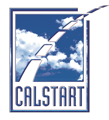Zero-emission freight vehicle technology advancing rapidly; New analysis tracks sector status, identifies ways to accelerate market transformation | Dec. 9, 2020
PASADENA, Calif. – Zero-emission freight vehicle (ZEFV) technology is advancing rapidly – soon to reach an inflection point in which these advanced vehicles can replace diesel freight vehicles in most applications, ranges and uses, starting in urban settings. That’s the conclusion of a new report from CALSTART and FIER Automotive & Mobility – Moving Zero-Emission Freight Toward Commercialization – which analyzes market trends, new technologies, and the actions that governments and industry can take to accelerate ZEFV commercialization.
“Freight trucks represent just four-percent of on-road vehicles, but they create more than half of on-road pollution,” said Dr. Cristiano Façanha, co-author of the report and Global Director of CALSTART’s Global Commercial Vehicle Drive to Zero program and campaign (Drive to ZeroTM). “Getting to a point where we can essentially ‘drag and drop’ zero-emission freight vehicles in to replace their diesel counterparts will bring economic, environmental, health and other community benefits – particularly for those in disadvantaged communities where freight vehicles have the most emissions impact.”
The report, which focuses its analysis on freight vehicles (all-electric cargo vans, all-electric medium-duty delivery trucks and yard tractors, and heavy-duty regional and long-haul trucks – including hydrogen fuel cell and all-electric) was prepared for The International ZEV Alliance. It offers the following new data points:
- Different segments of the ZEFV market are at different stages of the commercialization curve with lighter trucks in an early commercial stage, medium-duty ZEFVs in the pilot to small scale commercialization stage, and heavy-duty ZEFVs in the demonstration to pilot phase (pg. 13-14).
- ZEFV model availability is accelerating and range growing, with several planned models expecting to exceed 1,000km by 2023 (pg. 13). By the end of 2020, manufacturers for each on-road vehicle segment will offer at least ten distinct vehicle models in the US, Canada and Europe (pg.14).
- Many ZEFV range capabilities (200km-400km) meet most operational needs (60 percent of trucks daily movements are below 400km) (pg. 15).
- Most ZEFV segments will reach cost parity with diesel freight vehicles before 2030. According to the report, fleets in Europe can expect heavy-duty, medium-duty and cargo van ZEFV segments to actually have a LOWER total cost of ownership compared to diesel by that year (pg. 30).[1]
The report recognizes current policies and programs that are driving commercialization like fuel economy and GHG emissions standards, zero-emission sales requirements (like California’s ACT), vehicle registration limits and exemptions, controlled access zones, and low carbon or renewable fuel standards.
Additional policy, action, and infrastructure recommendations for accelerating ZEFV commercialization include:
- Adoption of ZEFV sales regulations (pg. 56)
- Purchase requirements that mirror sales regulation targets (pg.57)
- Purchase incentives (pg. 57)
- Implementation of zero-emission zones in dense areas (pg. 57)
- Fuel and road pricing (pg. 57)
- National programs for infrastructure growth and interoperability (pg. 58)
- Energy grid upgrades and interconnection improvements (pg. 59)
- Smart charging incentives (pg. 59)
- Hydrogen as a complementary fueling strategy (pg. 59)
- Cross regional alignment of ZEFV deployment and policy/program/action ecosystems (pg. 59)
Consistent with Drive to Zero’s Beachhead Strategy for accelerating the broader zero-emission commercial vehicle market, the report concludes that ZEFVs can reach the commercialization stage faster by (1) targeting vehicle and infrastructure deployment in first-success segments where zero-emission technologies are most readily available, (2) building eco-systems of supportive policies and incentives, and (3) aligning deployment and eco-systems across leading markets. At this stage, the report identifies urban applications as a first target for investment and growth because that application supports the market acceleration of multiple other ZEFV segments and the broader market.
A number of fleets and governments are recognized for taking early action to drive commercialization of ZEFVs. DHL, IKEA, FedEx, UPS, Anheuser-Busch, Amazon and the cities of Los Angeles and New York are among those recognized for boosting this young market through adoption, ambitious zero-emission goals, investment and driving increased visibility for ZEFVs.
“Industry support for zero-emission freight technologies is growing to meet government and consumer demand for reliable service delivered cleanly and equitably,” said Dan Welch, co-author of the report and Senior Project Manager for CALSTART.
Drive to Zero’s goal is to drive market viability for zero-emission commercial vehicles in key vehicle segments in urban communities by 2025 and achieve full market penetration by 2040. The program and campaign enjoys the support of nearly 100 government, city, industry, fleet and utility partners including the nations of Canada, China, Chile, Finland, Germany, Japan, Netherlands, Norway and Sweden as well as BYD, New Flyer Industries, ARRIVAL, IKEA’s Ingka Group, Ryder, Black and Veatch, Siemens, the California Air Resources Board, the cities of New York, Los Angeles, Oslo, Vancouver and many others. These partners pledge to work together under the auspices of Drive to Zero to identify best practices to support and accelerate the growing zero-emission commercial vehicle market, eliminate barriers to development and adoption, and coordinate among stakeholders to grow the zero-emission commercial vehicle segment.
Drive to Zero is now coordinating a “Global MOU” of nations to commit to aggressive zero emission commercial vehicle targets by 2030 and 2050 and set actions in place to achieve them.
CALSTART | Changing transportation for good
A national nonprofit consortium with offices in New York, Michigan, Colorado and California and partners world-wide, CALSTART works with 260+ member company and agency innovators to build a prosperous, efficient and clean high-tech transportation industry. We knock out barriers to modernization and the adoption of clean vehicles. CALSTART is changing transportation for good.
Contact: Roxanna Smith | [email protected] | 510.326.0390
[1] TCO analysis focused on European markets to help control for variables in fuel prices, vehicle purchase and depreciation estimates, and other factors. The analysis focused solely on vehicle costs.
